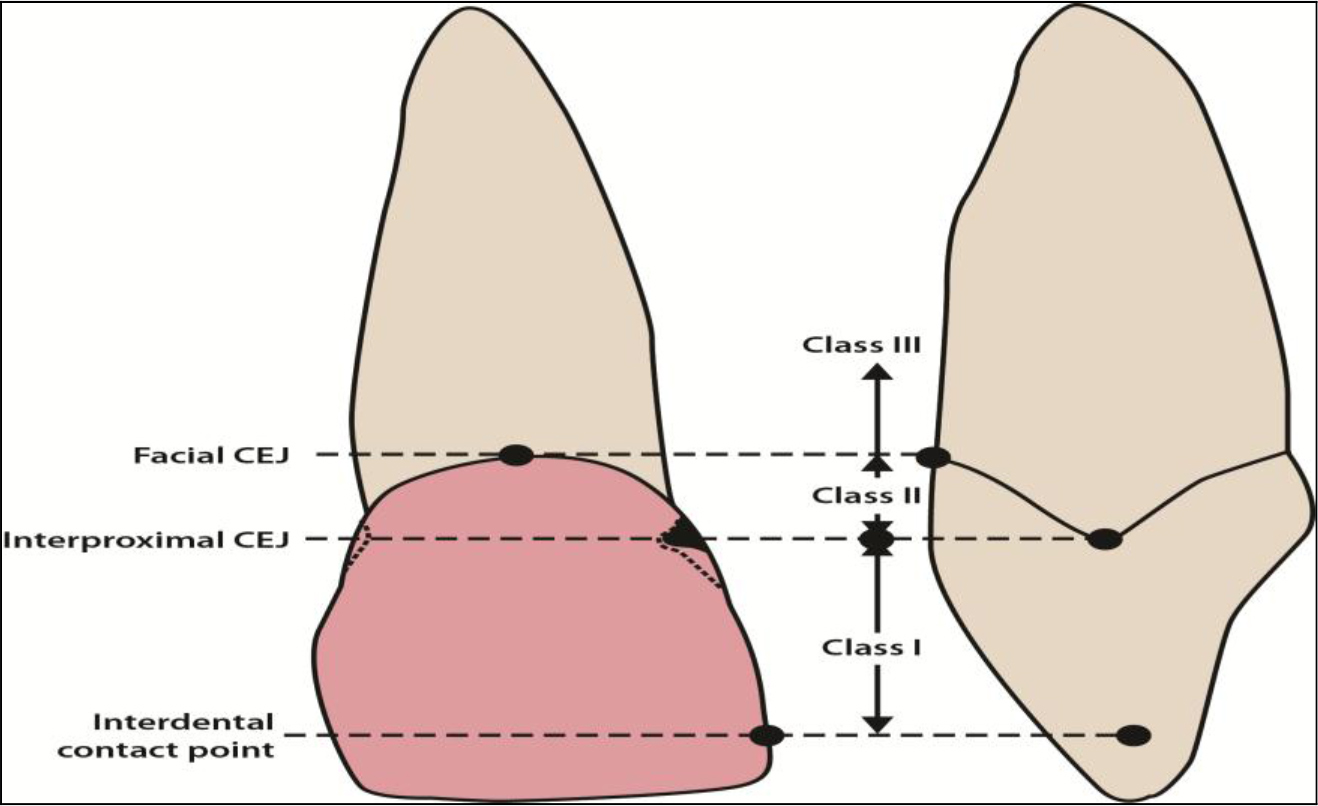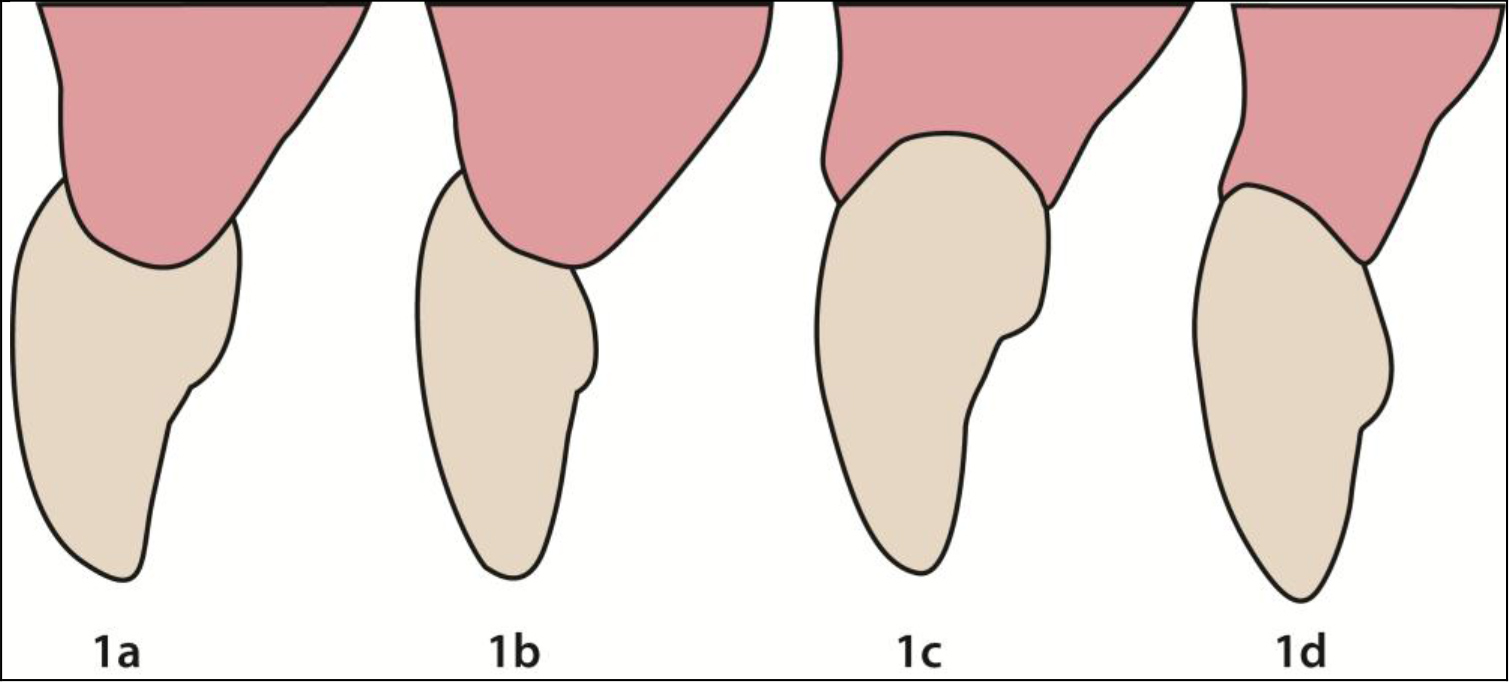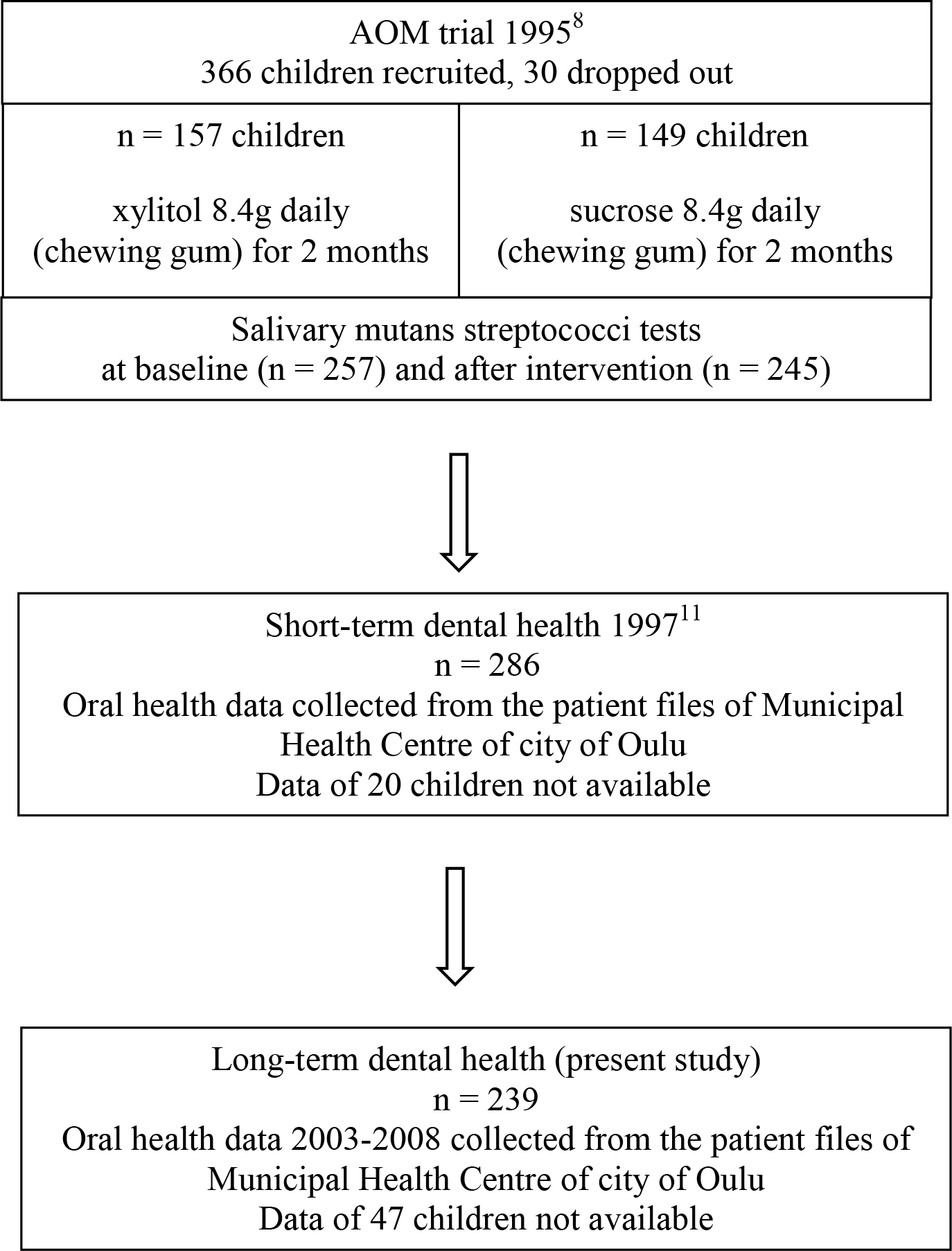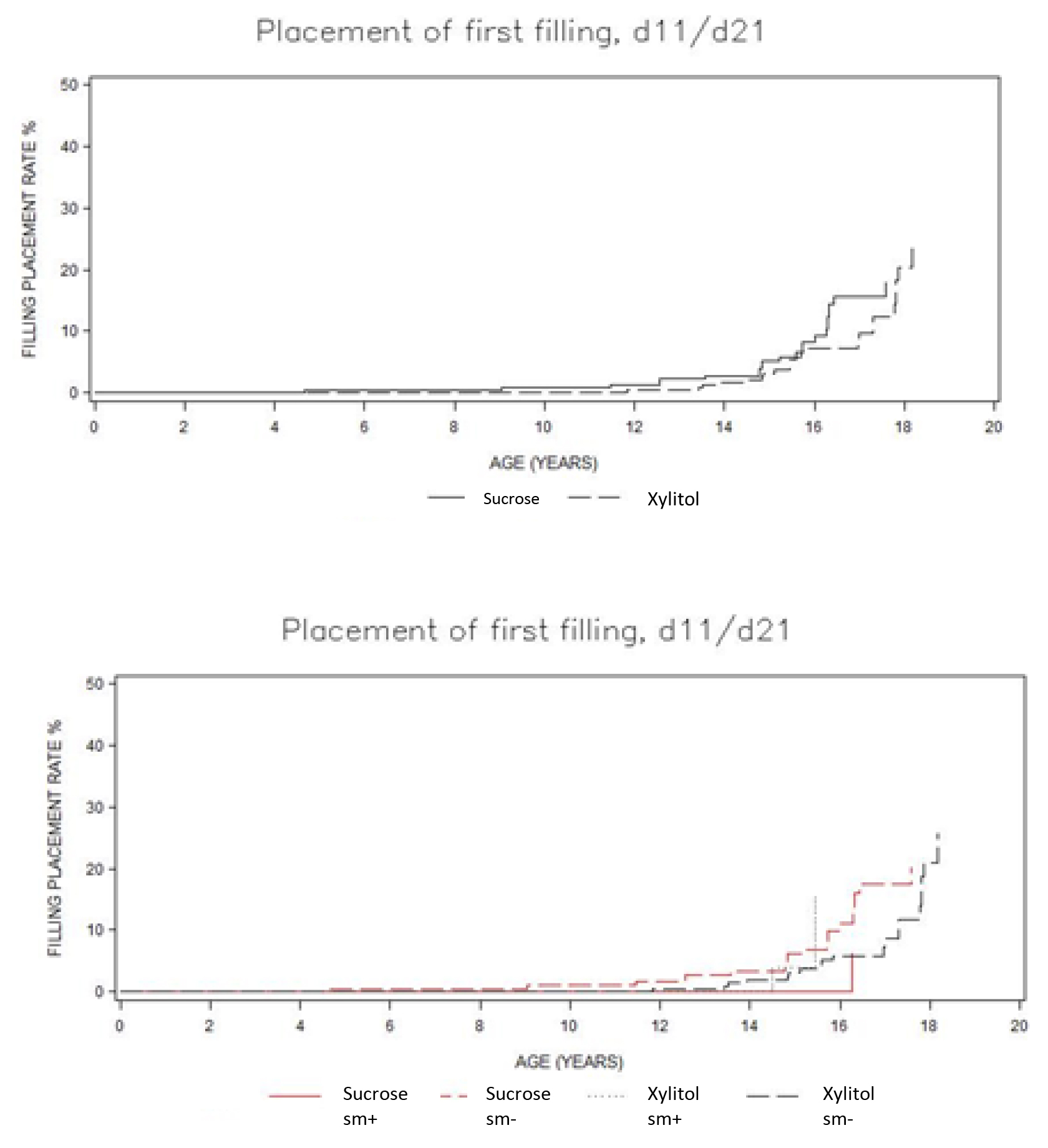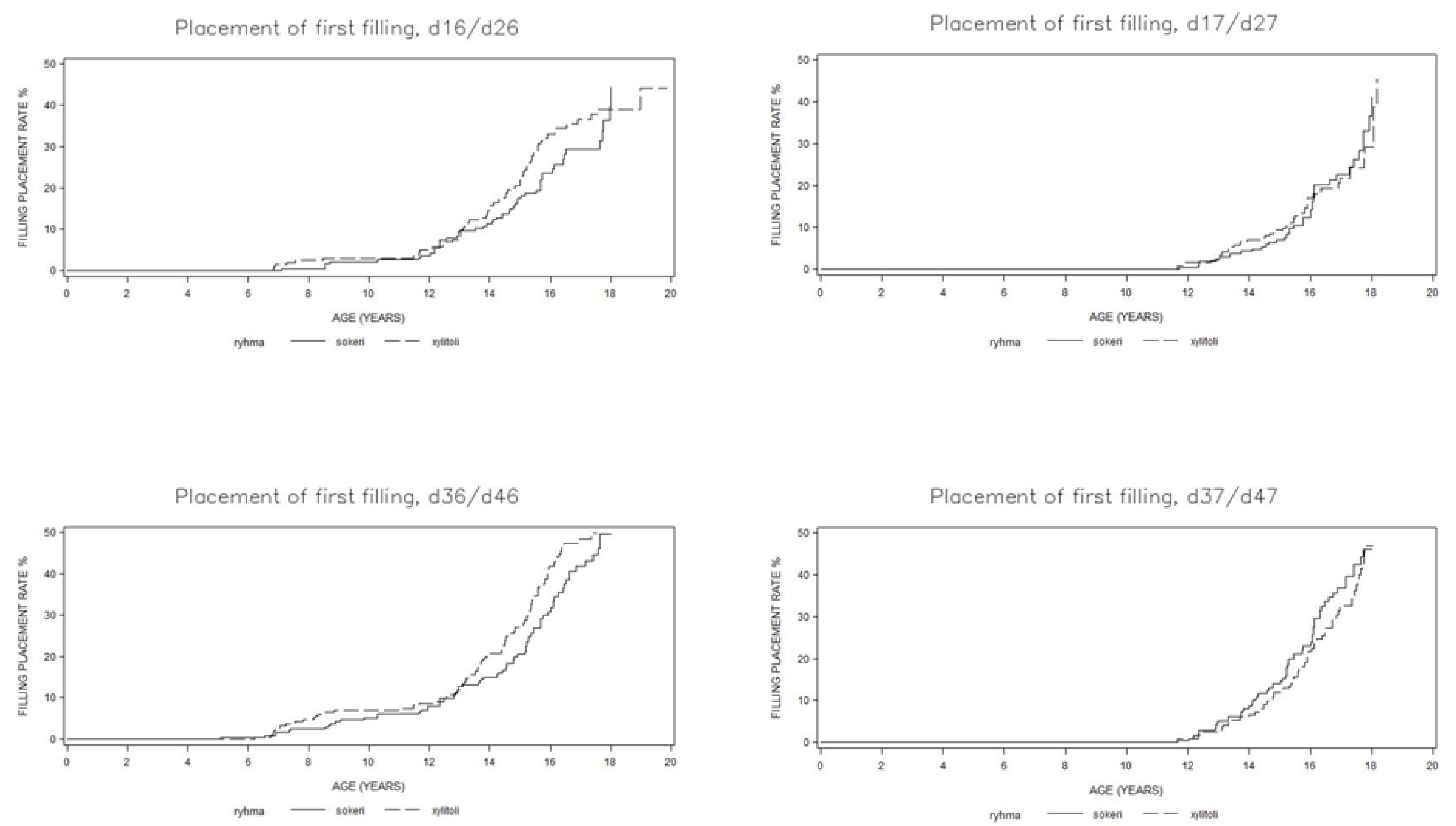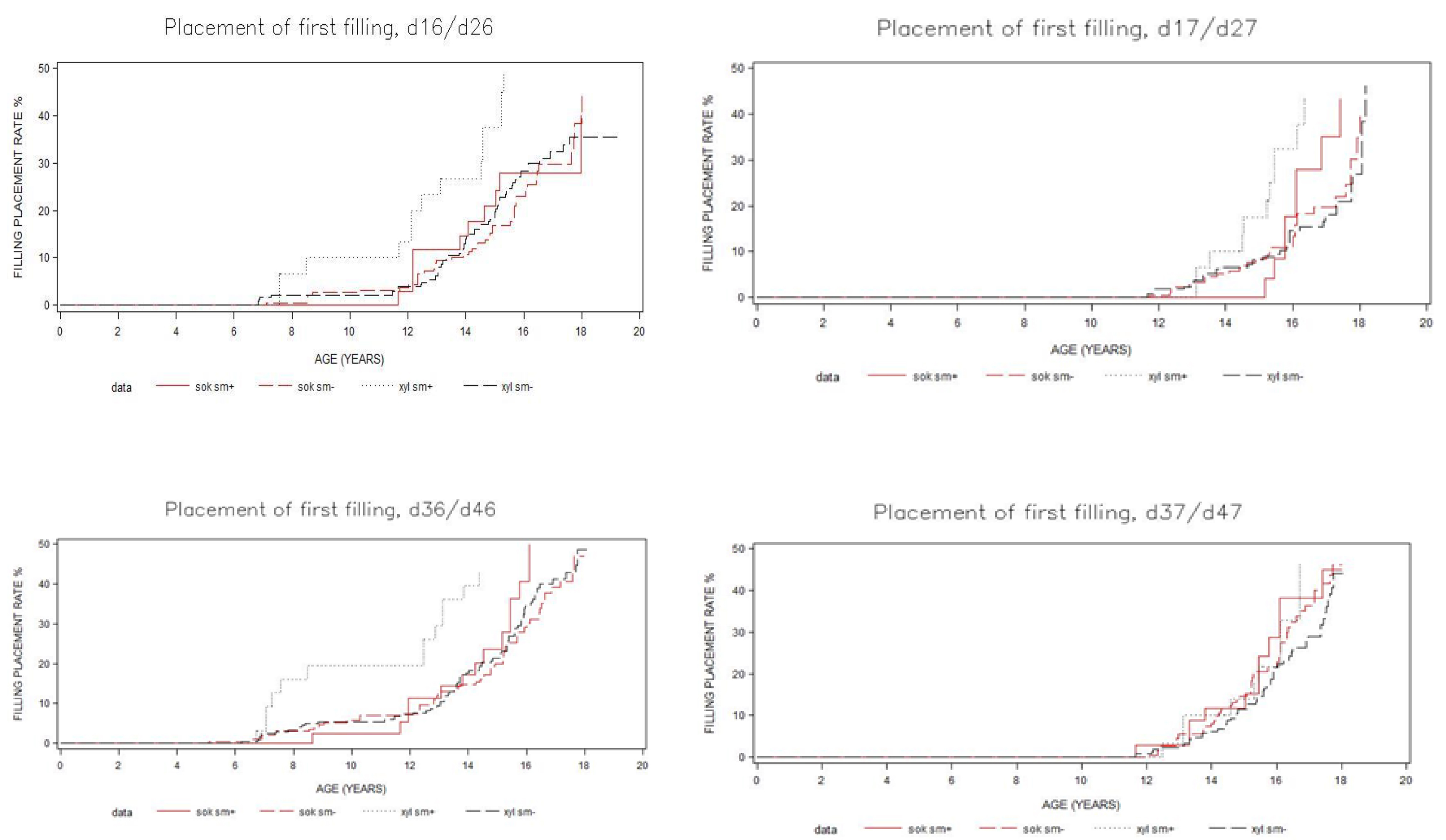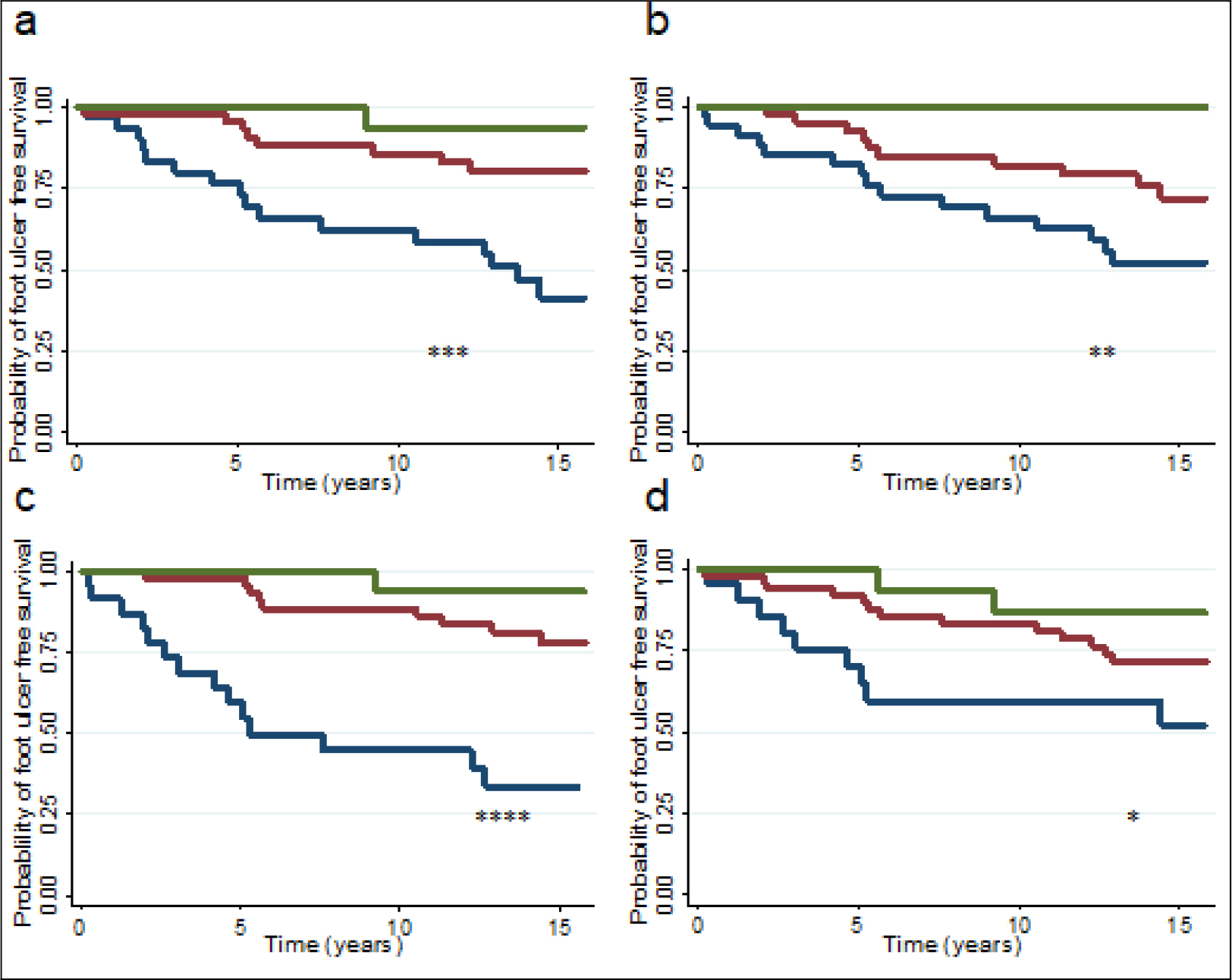Abstract
Aims: This study investigated the relationship between time spent in physical activity and developmental skills.
Methods: Developmental skills of twenty-one children (M=49.18 months) were screened using the Ages and Stages Questionnaire (ASQ-3). Physical activity counts were collected using Actical accelerometers for 4 to 6 days.
Results: Positive correlations were identified between vigorous physical activity (VPA) and fine motor (FM) scores and gross motor (GM) scores. Children at risk for FM and GM developmental delay spent less time in VPA than the children categorized typically developing. Children at risk for FM delays also spent less time in moderate physical activity (MPA).
Conclusion: In this study, gross motor and fine motor skills were found to have a relationship with MPA or VPA. Additional research is needed to investigate the relationship between developmental skills and activity levels of young children beyond the gross motor skill domain.
Keywords
Physical activity, gross motor, fine motor, developmental skills, preschool, children
Introduction
Physical activity is considered a critical component of a healthy lifestyle; it can be utilized as preventative intervention for obesity in children. Pediatric health care providers can play a pivotal role in the management of pediatric obesity [1]. Caution must be utilized when recommending physical activity as an intervention for obesity in children because biomechanical changes, musculoskeletal anomalies, and pain have been associated with pediatric obesity [2].
It is evident that participation in physical activity has numerous health benefits [3]. Health behaviorists and practitioners are still exploring ways to facilitate the development of habits in young children that influence later physical fitness and healthy weight. The National Association for Sports and Physical Education (NASPE) recommends that preschoolers participate in at least 60 mintues of structured, developmentally-appropriate physical activity each day [4]. In addition, preschoolers should engage in at least 60 mintues, and up to several hours, of unstructured, developmentally-appropriate physical activity per day, and they should not be sedentary for more than 60 minutes at a time, except when sleeping [5, 6]. A clear understanding of global development is necessary for researchers, clinicians and educators to develop studies, activities or programs aimed at increasing physical activity in children. Head Start and Early Head Start (HS/EHS) programs measure school readiness according to five domains, approaches to learning, social and emotional, language and literacy, cognition, and perceptual, motor and physical development [7].
Understanding the relationship between development and physical activity levels may assist clinicians and educators in understanding the impact that one may have on the other. Most research concerning physical activity, pediatric obesity, and academic achievement has been conducted with children in elementary school and beyond, and generally not with children younger than six years old. Investigators found that 9- to 10-year-old children who spent more than three-quarters of their time engaging in sedentary behavior, such as watching television and sitting at computers, had up to nine times poorer motor coordination than did their more active peers [8]. It is unclear, in the literature, the role of physical activity and environmental engagement on overall development and academic achievement. Movement is considered a key component in cognitive development. Research investigating cognitive development and the relationship to physical activity in preschool-age children has not been published yet, but the relationship of exercise or physical activity and academic performance has been studied in school-age children [9, 10, 11]. Psychosocial benefits, improved social competence and externalizing problems, have been documented [12]. Spencer et al. [13] explained that as a child moves, cognitive development is reliant in part on the role of interaction between sensorimotor integration and the environment. A child’s action is influenced by his or her perception of the consequences of his or her action on the environment. This is the beginning of understanding the association of physical action and its effects, which leads to participation in physical activity. Further, games or physical activities that require problem solving potentially provide circumstances to nurture and encourage the development of cognitive skills [14]. Subsequently, one might assume that a relationship exists between physical activity and cognitive development.
It is important to understand that acquisition of developmental skills and levels of physical activity are not only inherent, but also influenced by the environment as well as anyone they may interact with daily [15, 16]. Educators and clinicians working with young children should emphasize (or strive to facilitate) positive peer interaction, improved developmental skills and continued engagement in physical activity. The purpose of this research was to investigate the association between time spent in physical activity and performance of global developmental skills in preschool age children.
Methods
Study Design
A non-experimental design was utilized to examine the relationship between physical activity and global developmental skills of preschool-age children. Amount of time spent in physical activity levels was determined through results of Actical Accelerometers worn by preschool-age children. To assess global developmental skills, each child’s parent or legal guardian completed the Ages and Stages Questionnaire, 3rd edition (ASQ-3). The study was approved by a university Institutional Review Board (IRB).
Recruitment Procedures
The investigator contacted local preschools by phone or email, provided a description of the study, and requested cooperation.
Participants
A convenience sample was used with a goal to recruit a minimum of 20 participants. Twenty-two children and their caregivers participated in the study. Participants were recruited through disbursement of flyers, from the local YMCA, word-of-mouth, and snowball sampling. Inclusion criteria were as follows: 1. The child must be currently enrolled in preschool. 2. The child must be between the ages of 3 and 5 years, 4 months at time of informed consent. 3. The child must be independently ambulatory without assistance. In order to have a comparative sample of physical activity, children who were non-ambulatory were excluded from the study. Also, because the ASQ-3 could be used only with children up to 66 months of age, any child older than 64 months at time of informed consent were excluded to ensure adequate time to collect all data prior to the child turning 66 months old.
Twenty-two children, 11 boys and 11 girls, participated in the study. One child was eliminated for non-compliance with accelerometer use. Consequentially, ten boys completed the study. The range of children’s ages were 36 months to 63.47 months. The mean age of the participants was 49.18 months. Majority of the participants were Caucasian (71.4%), which is consistent with the demographics of the county (76.6%) and state (77.1%) in which the study was conducted [17]. Most lived in single family homes (81.0%) and had stairs in their home (71.4%). Refer to Table 1 for demographic information of participants.
Table 1. Individual Demographic Information as a Percentage of the Sample.
|
Characteristic |
All n |
% |
At Riska n |
% |
Typicalb n |
% |
|
Race |
||||||
|
Caucasian |
15 |
71.4 |
8 |
80 |
7 |
63.6 |
|
African American |
1 |
4.8 |
1 |
9.1 |
||
|
Bi-Racial |
4 |
19.0 |
2 |
20 |
2 |
18.2 |
|
Middle Eastern(Arab) |
1 |
4.8 |
1 |
9.1 |
||
|
Mother’s Highest Degree |
||||||
|
HS/Technical/Associate degree |
10 |
47.6 |
4 |
40 |
6 |
54.5 |
|
Bachelor’s degree or higher |
11 |
52.4 |
6 |
60 |
5 |
45.5 |
|
Father’s Highest Degree |
||||||
|
HS/Technical/Associate degree |
10 |
47.6 |
3 |
30 |
7 |
63.6 |
|
Bachelor’s degree or higher |
11 |
52.4 |
7 |
70 |
4 |
36.4 |
|
Type of Home |
||||||
|
Single Family Home |
17 |
81.0 |
8 |
80 |
9 |
81.8 |
|
Townhouse |
3 |
14.3 |
2 |
20 |
1 |
9.1 |
|
Mobile Home |
1 |
4.8 |
1 |
9.1 |
||
|
Stairs Present in Home |
||||||
|
Yes |
15 |
71.4 |
8 |
80 |
7 |
63.6 |
|
No |
6 |
28.6 |
2 |
20 |
4 |
36.4 |
|
Child’s Birth Order |
||||||
|
Only child |
3 |
14.3 |
1 |
10 |
2 |
18.2 |
|
Oldest child |
9 |
42.9 |
3 |
30 |
6 |
54.5 |
|
Middle child |
2 |
9.5 |
1 |
10 |
1 |
9.1 |
|
Youngest child |
7 |
33.3 |
5 |
50 |
2 |
18.2 |
|
Body Mass Index |
||||||
|
Under/Healthy weight |
14 |
66.7 |
6 |
60 |
8 |
72.7 |
|
Overweight/Obese |
7 |
33.3 |
4 |
40 |
3 |
27.3 |
Note. N=21
aChildren at risk for developmental delay in any domain according to performance on ASQ -3.
bChildren not at risk for developmental delay in any domain according to performance on ASQ -3.
Measurement Tools
Demographic questionnaire
Parents completed the demographic questionnaire at the first appointment. Additionally, the participant’s height and weight were recorded on the demographic questionnaire. The investigator measured the participants’ height using a Komelon self-lock tape measure in standing and measured weight by asking the child to stand, unsupported, on a Health-o-meter LED digital bathroom scale [18].
Ages and Stages Questionnaire
The investigator utilized the ASQ-3 [19] to assess global development skills in five domains: communication, gross motor, fine motor, problem-solving, and personal social development. The purpose of the ASQ-3 is to identify children who may need developmental monitoring or additional developmental evaluation by comparing child scores to standardized norms from age-matched peers. The first cut-off score, 1 standard deviation below the standardized mean, corresponds with a potential need to be monitored and provided with developmental activities. The second cutoff score, 2 standard deviations below the standarized mean, corresponds with need for further evaluation to determine eligibility for services [19]. These cut-offs have been used to determine risk of developmental delay [20, 21, 22]. For this study, a cut-off score of one standard deviaiton or greater was used to identify participants at-risk of having developmental delay and were categorized as “at-risk.” Those who did not score one standard deviation or more below the mean were categorized as “typical.”
Accelerometer
Physical activity was objectively measured using an Actical accelerometer manufactured by Phillips Respironics (Bend, OR). The accelerometer was programmed to collect raw data continuously. Multiple studies have reported the accelerometer to be a valid, objective way to measure physical activity levels in preschool-age children [22, 23, 24]. For the accelerometer data, each epoch was identified as wear versus non-wear. Non-wear time was defined as greater than 20 minutes of continuous zero signal and was removed from further analysis. Time spent in physical activity epochs were derived according to validated and commonly cited activity counts for preschool age children. Validated threshold values for preschool children were used to derive time spent in light, moderate, and vigorous activity [4, 22, 23]. For this study, the Actical accelerometer cutpoints defined and validated in preschool children by Pfeiffer et al. [23] were used to categorize physical activity. The established cutoffs are 715 activity counts for moderate intensity and 1411 for vigorous activity.
Daily log
Parents were instructed to complete a brief, daily log to document any issues that arose during the days their child wore the accelerometer, e.g., if the child was sick or hurt and was not as active as typically expected or if there was a problem with the use of the accelerometer. Parent(s) also asked their child’s teacher to communicate whether the accelerometer was taken off during the day. The teachers did so orally or by making a note in their typical daily journal of communication to parents. This information was used to determine whether data collected by the accelerometer was a valid measure of the child’s typical physical activity level [12, 26, 27].
Data Collection Procedures
The researcher followed standard protocol and selected the appropriate ASQ-3 based on the child’s age at time of the screening [19]. For example, the 36 month ASQ-3 is appropriate for children 34 months, 16 days through 38 months, 30 days. See Table 2 for the frequencies of the ASQ-3 administered.
Table 2. Ages and Stages Questionnaire – 3rd Edition Frequency of Questionnaires Administered.
|
Questionnaire |
Frequency |
Percentage |
|
36 months |
2 |
9.5% |
|
42 months |
6 |
28.6% |
|
48 months |
4 |
19.0% |
|
54 months |
4 |
19.0% |
|
60 months |
5 |
23.8% |
The investigator then instructed parents to complete the ASQ-3 and add comments as needed. If items were unclear, or if parents were unsure of skill performance, the use of test materials to verify performance was encouraged with the assistance of the investigator. The ASQ-3 was completed during the first appointment, with the investigator available to answer questions and provide assistance. The investigator scored and analyzed the ASQ-3 at the first appointment using the ASQ-3 pre-defined scale and the results were reviewed with the parents.
After completion of the ASQ-3, the investigator instructed the child and the parent on the use of the accelerometer to measure physical activity. Explicit instructions were provided both verbally and in writing. Parents were instructed that the child was to wear the accelerometer from morning until evening for the following five to seven days, which constituted an average wear time of 8 – 10 hours daily. A follow-up appointment was held to return the accelerometers and daily logs to the investigator, as well as to distribute suggested developmental activity sheets.
Data Analysis Procedures
Data were analyzed using Microsoft Excel 2013 and IBM SPSS Statistics, version 21.0 (IBM Corp, Armonk, NY). Participant’s information and data were de-identified by assigning unique, computer-generated, 10-digit alphanumeric code.
The investigator recorded and verified the information on the demographic questionnaire and ASQ-3 in a password protected SPSS file, including the calculated BMI from the height and weight measures. The investigator defined BMI according to the Center for Disease Control [28] categories and grouped them as follows: underweight/healthy weight (HW) and overweight/obese (OW).
The accelerometer PA data was downloaded using the Actical software and exported into a data file. A record was generated of the child’s participation with the number of days within the week and labeled each day chronologically as week days and weekend days. The number of minutes/hours per day in which the accelerometer was worn was then calculated within a Microsoft Excel spreadsheet for each day the participant had accelerometer data. The epoch list was analyzed by the investigator to calculate non-wear time (greater than 20 minutes of consecutive zero for an activity count): The total number of minutes was calculated from when the accelerometer began to detect PA in the morning until there were consistently zero activity counts in the evening. The calculated non-wear time was then subtracted from the total minutes to calculate the daily wear time. The wear time calculated from the accelerometer data were cross referenced with the daily log completed by parents. Any parental entries in the log regarding removal or atypical physical activity patterns were cross referenced in the PA spreadsheet epoch list to verify the accelerometer wear time data.
For each day the participants had a minimum of six hours (360 minutes) of wear time, the log of their wear time and PA minutes, in each category, were analyzed. Each epoch list was analyzed to calculate light, moderate and vigorous activity using the following cutpoints: light activity > 275 but < 715 activity counts, moderate activity was > 715 but < 1411 activity counts, and vigorous activity was > 1411 activity counts. Activity counts <275 were considered sedentary and not analyzed in this study. Each minute in each of the PA intensities was tabulated. A final record for each category was calculated and recorded for each day individually. Physical activity data were calculated for each day’s light, moderate, and vigorous activity. Moderate to vigorous physical activity (MVPA) was calculated by adding together the time spent in moderate and vigorous PA for each participant to compare with NASPE recommended guidelines for children. Each participant’s physical activity data were entered into SPSS by a graduate assistant and verified by investigator.
A p value of an α ≤ .050 was considered to be statistically significant and all tests were two-sided. Descriptive statistics were computed to describe the sample, determine the parametric nature of continuous variables, and examine the relationship between physical activity and global development. Due to the small sample size, responses for parent/guardian level of education were placed into the following categories, < 4-year college degree and > 4-year college degree. Due to the small sample size and non-normal distribution of developmental scores, the non-parametric Spearman’s rank-order correlation coefficient was conducted between each of the developmental domain scores and time spent in 3 activity levels, i.e., moderate PA, vigorous PA and combined MVPA.
To determine whether there were significant differences in patient characteristics between the at-risk and typical groups, comparisons were conducted. A Fisher’s exact test was used to compare categorical data and independent t tests were used to compare groups on continuous variables. Due to the small sample size and non-normal distribution of the ASQ -3, the non-parametric Mann-Whitney U was used to test for significant difference between the developmental domain groups.
Results
There were 31 children for whom a parent expressed interest in obtaining information regarding the study via opt in/out letters, phone calls or email messages. Two chose not to participate after receiving the informed consent information. Two could not make the initial appointments and did not reschedule. Five expressed interest via email, phone call or voicemail, but did not respond to subsequent phone or email attempts by the investigator to schedule the first appointment. Twenty-two children between the ages of 36 months (3 years) and 64 months (5 years, 4 months) participated in this study. One participant withdrew due to non-compliance with wearing the accelerometer. Participation of 10 preschool aged children (48%) was obtained through local recruitment using flyers at a community preschool. Eleven additional participants (52%) contacted the investigator via email or phone calls after being informed of the study through snowball sampling (word of mouth), for a final sample size of 21 children. Descriptive statistics are presented in Table 3.
Table 3. Comparison of Demographic Variables Between At Risk (n = 10) and Typical (n = 11) Groups.
|
Variable |
M (SD) |
ta |
||
|
Total |
At Risk |
Typical |
||
|
Demographic |
||||
|
Age (months) |
49.18 (8.38) |
46.68 (7.30) |
51.46 (8.97) |
.199 |
|
BMI (kg/m2) |
15.99 (1.80) |
16.26 (1.68) |
15.74 (1.94) |
.519 |
|
Days played outdoors |
1.43 (1.85) |
1.95 (2.29) |
.96 (1.27) |
.228 |
|
Days played at park |
1.02 (1.08) |
1.25 (1.72) |
.82 (1.06) |
.492 |
|
Total screen time (hours) |
2.78 (1.49) |
2.79 (1.56) |
2.77 (1.49) |
.967 |
Note: M = mean, SD = standard deviation
a equal variances assumed; t test for differences between at risk and typical groups significant at .05 level (2-tailed).
There were no significant differences between groups.
Spearman rank order correlation coefficients were conducted to investigate the relationships between physical activity and developmental skills as shown in Table 4. Specifically, there were statistically significant, moderately positive correlations between vigorous PA and fine motor score (rs(19) = .447, p = .042) and gross motor score (rs(19) = .481, p = .027).
Table 4. Bivariate Correlations (Spearman’s rho) Among Physical Activity and Developmental Skills.
|
Developmental Domain |
Light PA |
Mod PA |
Vig PA |
MVPA |
Total PA |
|
Communication score |
-.301 |
-.361 |
-.053 |
-.298 |
-.349 |
|
Gross Motor score |
-.151 |
.136 |
.481* |
.290 |
.123 |
|
Fine Motor score |
-.028 |
.169 |
.447* |
.367 |
.245 |
|
Problem Solving score |
.247 |
.188 |
.225 |
.181 |
.265 |
|
Personal Social score |
.382 |
.132 |
-.239 |
-.120 |
.204 |
Note: PA = physical activity, MVPA= moderate to vigorous physical activity
* Correlation is significant at the .05 level (2-tailed)
Based on the scores from ASQ-3, participants were categorized into the two groups, at risk, n = 10, and typical, n = 11. Physical activity categories also were compared for at risk and typical groups; refer to Table 5 for the time spent in light, moderate, vigorous, and MVPA. There was no statistically significant difference in the amount of time spent in physical activity between the overall at risk and typical groups.
Table 5. Comparison of Outcome Variables Between At Risk (n = 10) and Typical (n = 11) Groups.
|
Variable |
At Risk n = 10 |
Typical n = 11 |
|||
|
Mdn (IQR) |
M (SD) |
Mdn (IQR) |
M (SD) |
t |
|
|
Developmental Domains |
|||||
|
Communication score |
42.50 (17.50) |
41.00 (15.60) |
50.00 (5.00) |
52.73 (4.67) |
.044b |
|
Gross Motor score |
45.00 (15.00) |
43.50 (13.55) |
50.00 (10.00) |
52.73 (6.07) |
.055a |
|
Fine Motor score |
42.50 (18.75) |
40.00 (12.47) |
50.00 (15.00) |
50.00 (7.75) |
.038a |
|
Problem-Solving score |
47.50 (18.75) |
48.00 (9.19) |
60.00 (5.00) |
56.82 (4.05) |
.016b |
|
Personal Social score |
60.00 (10.00) |
55.00 (8.16) |
60.00 (10.00) |
55.00 (5.92) |
1.00a |
|
Time Spent in Physical Activity (PA) |
|||||
|
Light PA (min) |
81.40 (53.70) |
92.64 (29.10) |
85.20 (46.0) |
88.91 (26.82) |
.763a |
|
Moderate PA (min) |
46.43 (29.68) |
46.69 (19.78) |
42.33 (18.50) |
49.55 (18.35) |
.735a |
|
Vigorous PA (min) |
26.3 (26.38) |
27.66 (18.81) |
34.00 (31.47) |
41.68 (20.65) |
.122a |
|
MVPA (min) |
79.38 (28.67) |
74.35 (34.83) |
73.00 (45.83) |
91.22 (37.40) |
.299a |
Note: Mdn = median, IQR = interquartile range, M = mean, SD = standard deviation,
a equal variances assumed; t test significant at the .05 level (2-tailed)
b equal variances not assumed; t test significant at the .05 level (2-tailed)
Results from the comparison of mean time spent in the various PA categories between at risk and typical group, separated by developmental categories, are presented in Table 6. In all comparisons, the children that fell into the at-risk groups for communication, problem-solving or personal-social skills spent the same amount of time in light, moderate, and vigorous PA when compared to the children with typical developmental screening scores. The children at-risk for gross motor delays spent less time in vigorous PA as compared to the children in the typical group (U = 6.0, n1 = 5, n2 = 16, p = .003). The children at risk for fine motor delays spent less time in both moderate (t(19) = -2.633; p = .017) and vigorous PA (t(19) = -2.499; p = .023).
Table 6. Comparison of mean time spent in physical activity categories between at risk and typical groups separated by developmental domains.
|
Mean (SD) |
|||||
|
At Risk |
n |
Typical |
n |
Ua |
|
|
Communication Domain |
4 |
17 |
|||
|
Light Physical Activity |
94.38 (30.77) |
89.82 (27.36) |
1.00 |
||
|
Moderate Physical Activitya |
52.12 (25.61) |
47.26 (17.48) |
.517 |
||
|
Vigorous Physical Activity |
33.14 (25.03) |
35.43 (20.28) |
1.00 |
||
|
Gross Motor Domain |
5 |
16 |
|||
|
Light Physical Activity |
96.69 (31.03) |
88.81 (28.83) |
.548 |
||
|
Moderate Physical Activity |
40.47 (20.91) |
50.60 (17.87) |
.548 |
||
|
Vigorous Physical Activity* |
15.06 (12.01) |
41.23 (18.78) |
.003* |
||
|
Fine Motor Domain |
2 |
19 |
|||
|
Light Physical Activity |
67.80 (2.26) |
93.10 (27.61) |
.286 |
||
|
Moderate Physical Activity* |
19.00 (1.98) |
51.26 (16.74) |
.010* |
||
|
Vigorous Physical Activity* |
3.70 (0.42) |
38.29 (18.72) |
.010* |
||
|
Problem-Solving Domain |
2 |
19 |
|||
|
Light Physical Activity |
69.40 (4.53) |
92.93 (27.75) |
.343 |
||
|
Moderate Physical Activity |
31.60 (15.84) |
49.93 (18.37) |
.286 |
||
|
Vigorous Physical Activity |
14.00 (14.99) |
37.21 (20.11) |
.152 |
||
|
Personal-Social Domain |
1 |
20 |
|||
|
Light Physical Activity |
59.00 (n/a) |
92.27 (26.98) |
.286 |
||
|
Moderate Physical Activity |
33.67 (n/a) |
48.9 (18.79) |
.381 |
||
|
Vigorous Physical Activity |
47.50 (n/a) |
37.37 (20.92) |
.571 |
||
a Mann-Whitney U Test for comparison of mean physical activity amongst at risk and no risk groups in each developmental domain
* p≤ .05
Discussion
Some evidence suggests that physical activity is associated with cognition [10, 11, 15, 29], motor skills [30, 31, 32], and psychosocial behavior [33, 34] in children. Participation in physical activity might be important in enhancing development in children. Conversely, developmental skills need to be considered when encouraging participation in physical activities [6, 35]. The two primary objectives of this study were to (a) describe the physical activity level of a sample of preschool children and (b) investigate whether there is an association between physical activity and performance of global developmental skills.
In the sample of 21 children 3- to 5-years old, the amount of time spent in physical activity, as measured with an Actical accelerometer, was variable based on the defined level of intensity. The majority of the physical activity exhibited by the participants was light physical activity, followed by moderate then vigorous physical activity. The inconsistency of published physical activity accelerometer cutpoints in preschool children [4, 23, 24, 36] as well as the interpretations of the NASPE guidelines, impacts the ability to determine if preschool-aged children are participating in adequate amounts of physical activity daily. Most of the children spent an average of at least 60 minutes per day in MVPA. Collectively, there were few days spent in 120 minutes or more of MVPA.
Grouping moderate and vigorous activity into MVPA was used to compare the sample’s PA to NASPE recommended amounts of physical activity. However, physiologically, responses to the various levels of physical activity differ [3, 12, 37]. Therefore, grouping the various levels of physical activity may not be appropriate in all circumstances. Investigators identified a moderate positive association between both fine and gross motor developmental skills on the ASQ-3 and vigorous physical activity levels of children 3- and 5-years old. Fine motor skills were also moderately correlated with moderate to vigorous physical activity and weakly correlated moderate physical activity. The findings suggest that 3- to 5-year old children who spend more time in vigorous physical activity have better developed motor skills. The results are consistent with previous literature [30, 32, 37]. Moderate physical activity was not related to gross motor skills, and a weak, inverse correlation between gross motor skills and light physical activity also supports that the amount of time spent in the various levels of physical activity may be important for gross motor development. The findings suggest that children with less developed gross motor skills spent more time in light physical activity; this is consistent with previous research of preschool children [32]. Researchers have found a positive association with moderate to vigorous physical activity and cognition in school-age children [29, 38, 39]. However, with this sample of preschool children, only a weak, statistically insignificant relationship was found between the physical activity and problem solving. The small sample size may have affected these results, warranting further investigation
Overall, children categorized as at risk (n = 10) participated in less vigorous physical activity than the children in the typical group (n = 11). The at-risk groups for each of the developmental domains yielded very small sample sizes. Due to the small sample sizes, if any child presented with a risk in any domain, they were categorized in the at-risk group. Even though development occurs in multiple domains simultaneously, the ASQ-3 is not intended to yield a global developmental score [21]. This may limit the validity of categorizing the groups based on potential development in any domain with the intent to compare the distribution of the continuous variables for potential predictive value.
Limitations
This study has limitations that merit recognition and discussion. Small sample size and limited diversity of the sample posed threats to generalizability of the results. Sampling bias was a limitation from two perspectives. The first was the cooperation of the YMCA, which accounted for 48% of the total participants. The program emphasizes healthy habits and requires participation in sports and swimming. Additionally, participants were self-selected, which may indicate the families were more active or aware of the recommended amounts of physical activity. The researcher did not collect information on the parents’ understanding of global development or recommended physical activity levels, which could have affected the amount of time spent in physical activity as well as the child’s exposure to activities that may have enhanced development.
Another limitation of the study was the timing of data collection. The majority of the data collection occurred during the winter months. It was the coldest winter on record with 231% of the typical snowfall [40]. This may have impacted time spent in any or all of the levels of PA, screen time and number of days per week of outside play.
The ASQ-3 that was used to assess developmental level in each domain is a developmental screening tool. It is not intended to be used for diagnostic purposes, rather to identify children at risk for developmental delay [21, 22, 41]. Because the purpose of the study was to compare developmental level with physical activity the overall sensitivity and specificity of the ASQ-3 were believed to be an adequate measure, utilizing the ASQ-3 was not a concern initially. However, the maximum score in each domain is 60, and the median children’s score in several of the domains was greater than 50 resulting thus reducing the variability of scores within the domain. This raises the question about whether this screening tool was sensitive enough for the study and whether a diagnostic tool as opposed to a screening would have been more appropriate. These concerns are supported by a recent study comparing developmental screening tools, ASQ-3 with the Parents’ Evaluation of Developmental Status (PEDS), which reported a significant incongruence between the screening tools [42].
Conclusions
This study extended the current body of literature on physical activity of preschool age children by providing a comprehensive description of the time spent in each type of physical activity as well as a comparison to the NASPE recommended guidelines of daily physical activity. This study also provided additional support of the relationship between motor skills and physical activity. Specifically, clinicians may consider encouraging developmentally appropriate, vigorous physical activities for children between the ages of 3- and 5-years old.
The relationship of global developmental skills and physical activity needs to be further examined. Research might consider recruiting children with documented developmental delay as well as children without a documented delay or utilize an assessment tool that (a) is valid to use with both typical and developmentally delayed preschool children, (b) can convert raw scores to standardized scores (t or z score), and (c) has higher specificity and sensitivity. Further research utilizing accelerometers as an objective measure of physical activity, establishing the cutpoints with a sample of preschoolers using the same accelerometers with additional physiologic measures such as oxygen consumption and heart rate [23, 25, 27] may also provide greater validation of physical activity. Longitudinal, experimental research is also needed to determine the long-term relationship between physical activity, and a child’s overall development in the motor, cognitive, and social emotional domains.
Acknowledgment
I would like to thank the faculty and administration the University of Indianapolis, College of Health Sciences and Krannert School of Physical Therapy.
References
- McCurdy LE, Winterbottom KE, Mehta SS, Roberts JR (2010) Using nature and outdoor activity to improve children’s health. Curr Prob Pediatr Adolesc Health Care 40: 102–117.
- Shultz SP, Anner J, Hills AP (2009) Paediatric obesity, physical activity and the musculoskeletal system. Obesity Rev 10: 576–582.
- Adamo KB, Langlois KA, Brett KE, Colley RC (2012) Young children and parental physical activity levels: findings from the canadian health measures survey. Am J Prev Med 43:168–175.
- Beets MW, Bornstein D, Dowda M, Pate RR (2011) Compliance With National Guidelines for Physical Activity in U.S. Preschoolers: Measurement and Interpretation. Pediatrics 127: 658–664.
- U.S. Department of Health and Human Services (HHS) (2008) Physical Activity Guidelines for Americans. Washington, DC. Retrieved from: https://health.gov/paguidelines/pdf/paguide.pdf
- McEntire N (2010) ACTIVE START: A Statement of Physical Activity Guidelines for Children Birth to Five Years. Childhood Education 86: 200.
- Head Start. What is School Readiness? 2015; Early Childhood Learning and Knowledge Center. Available at: http://eclkc.ohs.acf.hhs.gov/hslc/hs/about,2015.
- Lopes L, Santos R, Pereira B, Lopes VP (2012) Associations between sedentary behavior and motor coordination in children. Am J Hum Biology 24: 746–752.
- Carlson SA FJ, Lee SM, Maynard M, Brown DR, Kohl (2008) Physical Education and Academic Achievement in Elementary School: Data From the Early Childhood Longitudinal Study. Am J Pub Health 98: 721–727.
- Grissom J (2005) Physical fitness and academic achievement. J Exer Physiol Online 8: 11–26.
- Telford RD, Cunningham RB, Fitzgerald R (2012) Physical education, obesity, and academic achievement: a 2-year longitudinal investigation of Australian elementary school children. Am J Pub Health 102: 368–374.
- Timmons BW, LeBlanc AG, Carson V (2012) Systematic review of physical activity and health in the early years (aged 0–4 years). Appl Physiol Nutr Metab 37:773–792.
- Spencer JP, Clearfield M, Corbetta D, Ulrich B, Buchanan P, et al. (2006) Moving toward a grand theory of development: in memory of Esther Thelen. Child Dev 77: 1521–1538. [crossref]
- Tomporowski PD, Lambourne K, Okumura MS (2011) Physical activity interventions and children’s mental function: an introduction and overview. Prev Med 52: 3–9.
- Gubbels JS, Kremers SPJ, van Kann DHH (2011) Interaction Between Physical Environment, Social Environment, and Child Characteristics in Determining Physical Activity at Child Care. Health Psychol 30: 84–90.
- Hill JO, Wyatt HR, Reed GW, Peters JC (2003) Obesity and the environment: where do we go from here? Science 299: 853–855.
- U.S. Census Bureau. Quick Facts: United States. 2017 Retrieved from: https://www.census.gov/quickfacts/fact/table/il,US/RHI125217.
- Yorkin M, Spaccarotella K, Martin-Biggers J, Quick V, Byrd-Bredbenner C (2013) Accuracy and consistency of weights provided by home bathroom scales. BMC Public Health 13: 1194. [crossref]
- Squires J, Bricker D (2009) Ages & Stages Questionnaires[R], Third Edition (ASQ-3[TM]): A Parent-Completed Child-Monitoring System. Brookes Publishing Company.
- Guiberson M, Rodríguez BL (2010) Measurement properties and classification accuracy of two spanish parent surveys of language development for preschool-age children. Am J Speech-Lang Pathol 19: 225–237 213p.
- Kerstjens JM, Bos AF, ten Vergert EM, de Meer G, Butcher PR, et al. (2009) Support for the global feasibility of the Ages and Stages Questionnaire as developmental screener. Early Hum Dev 85: 443–447 445p.
- Kerstjens JM, de Winter AF, Bocca-Tjeertes IF, Bos AF, Reijneveld SA (2012) Risk of Developmental Delay Increases Exponentially as Gestational Age of Preterm Infants Decreases: A Cohort Study at Age 4 Years. Dev Med Child Neurol 54: 1096–1101.
- Pate RR, Almeida MJ, McIver KL, Pfeiffer KA, Dowda M (2006) Validation and calibration of an accelerometer in preschool children. Obesity (Silver Spring) 14: 2000–2006. [crossref]
- Pfeiffer KA, McIver KL, Dowda M, Almeida MJ, Pate RR (2006) Validation and calibration of the Actical accelerometer in preschool children. Med Sci Sports Exerc 38: 152–157. [crossref]
- Puyau MR, Adolph AL, Vohra FA, Butte NF (2002) Validation and calibration of physical activity monitors in children. Obes Res 10: 150–157. [crossref]
- Timmons BW, Naylor P-J, Pfeiffer KA (2007) Physical activity for preschool children – how much and how? Appl Physiol Nutr Metab 32: 122–S134.
- Oliver M, Schofield GM, Kolt GS (2007) Physical activity in preschoolers: understanding prevalence and measurement issues. Sports medicine (Auckland, NZ) 37: 1045–1070.
- Division of Nutrition PA, and Obesity. BMI Percentile Calculator for Child and Teen, English Version. http://nccd.cdc.gov/dnpabmi/Calculator.aspx. Accessed October 27, 2015.
- Castelli DM, Hillman CH, Buck SM, Erwin HE (2007) Physical fitness and academic achievement in third- and fifth-grade students. J Sport Exerc Psychol 29: 239–252. [crossref]
- Cliff DP, Okely AD, Smith LM, Kim M (2009) Relationships Between Fundamental Movement Skills and Objectively Measured Physical Activity in Preschool Children. Pediatr Exer Sci. 21: 436–449.
- Potter D, Mashburn A, Grissmer D (2013) The family, neuroscience, and academic skills: An interdisciplinary account of social class gaps in children’s test scores. Social Sci Res 42: 446–464.
- Williams HG, Pfeiffer KA, O’Neill JR (2008) Motor Skill Performance and Physical Activity in Preschool Children. Obesity (19307381) 16: 1421–1426.
- Gabler-Halle D, et al. The Effects of Aerobic Exercise on Psychological and Behavioral Variables of Individuals with Developmental Disabilities: A Critical Review. Res Dev Disabil. 1993;14(5):359–386.
- Hinkley T, Crawford D, Salmon J, Okely AD, Hesketh K (2008) Preschool children and physical activity: a review of correlates. Am J Prev Med 34: 435–441. [crossref]
- Early Childhood Inclusion: A Joint Position Statement of the Division for Early Childhood (DEC) and the National Association for the Education of Young Children (NAEYC). Young Exceptional Children 2009 12: 42–47.
- Pfeiffer KA, Dowda M, McIver KL, Pate RR (2009) Factors related to objectively measured physical activity in preschool children. Pediatr Exerc Sci 21:196–208.
- Van Dusen DP, Kelder SH, Kohl HW, Ranjit N, Perry CL (2011) Associations of Physical Fitness and Academic Performance Among Schoolchildren. J School Health 81: 733–740.
- Nunez-Gaunaurd A, Moore JG, Roach KE, Miller TL, Kirk-Sanchez NJ (2013) Motor proficiency, strength, endurance, and physical activity among middle school children who are healthy, overweight, and obese. Pediatr Phys Ther 25: 130–138; discussion 139.
- Sibley BA, Etnier JL (2003) The relationship between physical activity and cognition in children: a meta-analysis. Pediatr Exer Sci 15: 243–256.
- Kuhne M (2014) One of the Coldest Winters in 20 Years Shatters Snow Records. Accuweathercom. http://www.accuweather.com/en/weather-news/record-breaking-cold-winter-we/24831365. Accessed July 13, 2014.
- Glascoe FP, Squires J (2007) Issues with the new developmental screening and surveillance policy statement. Pediatrics 119: 861–862. [crossref]
- Sices L, Stancin T, Kirchner HL, Bauchner H (2009) PEDS and ASQ developmental screening tests may not identify the same children. Pediatrics 124: e640-647.
